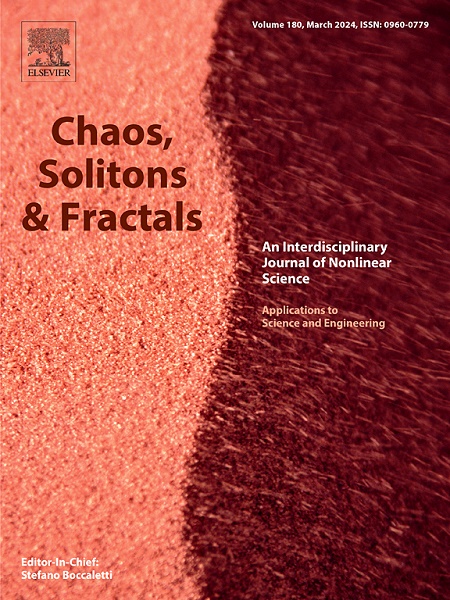一种新的基于Riemann-Hilbert公式的可积逆空间非局部Manakov方程约简方法及其应用
IF 5.6
1区 数学
Q1 MATHEMATICS, INTERDISCIPLINARY APPLICATIONS
引用次数: 0
摘要
本文提出了一种新的基于Riemann-Hilbert (RH)公式的可积逆空间非局部Manakov方程约简方法。首先,利用传统的RH方法难以确定逆空间非局部Manakov方程的散射数据约束;其次,为了获得逆空间非局部Manakov方程的散射数据约束,将传统的RH方法扩展为一种改进的基于新RH公式的约简方法。具体而言,利用基于RH公式的约简方法,确定了逆空间非局部Manakov方程的散射数据约束,以保证双组分ablowitz - kap - newwell - segur (AKNS)系统具有所需的非局部对称性约简。此外,还比较了逆空间非局部Manakov方程与Manakov方程的散射数据约束。第三,将得到的散射数据约束作用于双分量AKNS系统的散射数据约束,得到逆空间非局部Manakov方程的n孤子解。此外,将基于RH公式的新约简方法应用于另一个逆时空型可积非局部Manakov方程,验证了该方法的应用。此外,还将反时空非局部Manakov方程的散射数据约束与反空间非局部Manakov方程和Manakov方程的散射数据约束进行了比较。此外,根据不同的谱参数选择,对逆空间非局部Manakov方程和逆时空非局部Manakov方程的非线性孤子特征进行了详细的分析和分类。本文章由计算机程序翻译,如有差异,请以英文原文为准。
A novel Riemann–Hilbert formulation-based reduction method to an integrable reverse-space nonlocal Manakov equation and its applications
In this paper, a novel Riemann–Hilbert (RH) formulation-based reduction method is developed for an integrable reverse-space nonlocal Manakov equation. Firstly, the scattering-data constraints of the reverse-space nonlocal Manakov equation are shown to be difficult to determine via the traditional RH method. Secondly, to obtain the scattering-data constraints of the reverse-space nonlocal Manakov equation, the traditional RH method is extended to an improved version which we call a novel RH formulation-based reduction method. Specifically, utilizing the RH formulation-based reduction method, the scattering-data constraints of the reverse-space nonlocal Manakov equation are determined to guarantee the required nonlocal symmetry reduction of the two-component Ablowitz–Kaup–Newell–Segur (AKNS) system. Moreover, the scattering-data constraints of the reverse-space nonlocal Manakov equation are compared with those of the Manakov equation. Thirdly, -soliton solutions of the reverse-space nonlocal Manakov equation are obtained by imposing the obtained scattering-data constraints in those of the two-component AKNS system. Furthermore, the applications of our novel RH formulation-based reduction method are confirmed by applying it to another integrable nonlocal Manakov equation of reverse-spacetime type. Moreover, the scattering-data constraints of the reverse-spacetime nonlocal Manakov equation are further compared with those of the reverse-space nonlocal Manakov equation and the Manakov equation, respectively. Additionally, the nonlinear soliton features of the reverse-space nonlocal Manakov equation and the reverse-spacetime nonlocal Manakov equation are analyzed and classified in detail, respectively, according to different spectral parameter selections.
求助全文
通过发布文献求助,成功后即可免费获取论文全文。
去求助
来源期刊

Chaos Solitons & Fractals
物理-数学跨学科应用
CiteScore
13.20
自引率
10.30%
发文量
1087
审稿时长
9 months
期刊介绍:
Chaos, Solitons & Fractals strives to establish itself as a premier journal in the interdisciplinary realm of Nonlinear Science, Non-equilibrium, and Complex Phenomena. It welcomes submissions covering a broad spectrum of topics within this field, including dynamics, non-equilibrium processes in physics, chemistry, and geophysics, complex matter and networks, mathematical models, computational biology, applications to quantum and mesoscopic phenomena, fluctuations and random processes, self-organization, and social phenomena.
 求助内容:
求助内容: 应助结果提醒方式:
应助结果提醒方式:


